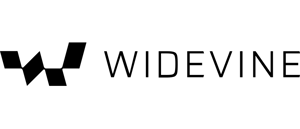When your streaming platform needs robust digital rights management (DRM) protection, you need to consider what solutions work with different playback platforms. From desktop computers to mobile devices to smart TVs, you need a comprehensive DRM solution that allows for clear and protected playback as widely as possible.As detailed on this comprehensive compatibility matrix, choosing the right DRM solution requires understanding what works where.

Widevine is one of the most popular and widely used DRMs. The Google product supports multiple levels of streaming quality and is required by many studios and other content producers. With three different security levels, Widevine supports both HD and standard-definition playback. Here's how it works on the most popular browsers and devices.
Widevine is, not surprisingly, used extensively within Google's desktop browsers and mobile devices. Widevine is supported for use on many of the most popular HTML5 browsers, including Chrome (v35+), Firefox (v47+) and Opera (v35+). The DRM does not support playback on Internet Explorer 11, Microsoft Edge or Safari. Microsoft Edge Chromium, on the other hand, supports Widevine on Mac OS.
However, while it works with Chrome on Android-powered devices, it does not support playback on Chrome for iOS. The DRM does support playback on Microsoft Edge Chromium and Firefox browsers on Android devices.
Widevine works with the MPEG-DASH streaming technology to deliver the highest-supported playback quality across multiple device types. DASH supports the widest variety of encrypted media, allowing content to be delivered using DASH no matter what DRM system is used by the playback device.
Widevine and DASH are not just used on browsers and mobile devices. The technology also works on set-top boxes and smart TVs, including Google products Android TV and Chromecast, along with Amazon Fire TV, Roku, NVidia Shield and the Smart TV Alliance, a consortium of makers that includes LG, Panasonic, Philips and Toshiba.

FairPlay is Apple's entry into the DRM market. It's the exclusive DRM solution on Safari browsers for both desktop computers and mobile devices. It's also used exclusively for content playback on Apple TVs.
FairPlay is also used with the proprietary streaming technology -- HTTP Live Streaming (HLS).
Both HLS and DASH work fundamentally the same. Each technology breaks down streaming content into smaller segments that are fed to browsers and playback devices. The enabled client selects the highest possible bitrate to download and play content without buffering or stalls in the playback itself.
Others
While Widevine and FairPlay are the biggest players in the DRM technology space, there are others available, including PlayReady, Microsoft's encryption and DRM solution. It's embedded in Internet Explorer 11 and Microsoft Edge browsers, most set-top boxes and devices (except Apple TV and NVidia Shield) and most smart TVs (except Sony Android TV). It's also used by the Xbox One, Xbox 360 and PlayStation 3 and 4 game consoles.
What It Means for Content Delivery
If you're considering content delivery, the multiple options for encryption and playback technologies can be confusing. It's why smart providers consider a multi-DRM platform. The KeyOS MultiKey service uses Widevine Modular, PlayReady and FairPlay, supporting HLS, MPEG-DASH and other streaming technologies.
Take the complications out of your content delivery with the KeyOS MultiKey solution from BuyDRM. To learn more and schedule a free demo, contact us today.
Read more related articles below:
The Anatomy of a DRM License Request
KeyOS WebPlay: A DRM-Forged HTML5 Player SDK
The Top 5 Questions to Answer for a Smooth Transition to DRM












